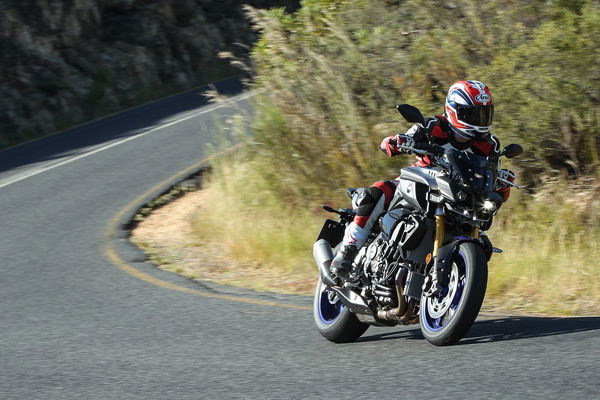First ride: BMW R1200GS Rallye review
The adventure market has changed since its last big update. So is the GS still boss?
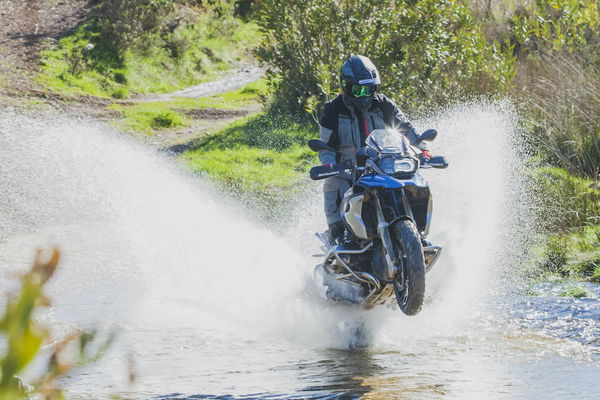
By Llewelyn Pavey
BMW’S R1200GS has just been given its first significant updates in three.
They include upgrades to the electronics, giving the traction control lean angle data so it can adapt accordingly.
Perhaps the big news is the Rallye edition: the closest thing in the BMW range to a KTM R model. It’s got a new, rather fetching paintjob plus some off-road centric features.
It’s got a new single unit seat that’s flatter and thinner through the knees. The small screen is also part of the package, as are the wide footpegs taken straight from the R 1200 GS Adventure model. The centre-stand has been removed.
In addition to the lean-angle-sensitive traction control, you also gain more ability to control individual settings within rider modes, including throttle response, traction control and AB.
The GS is a bike that never fails to impress me. It’s been three years since the last round of significant updates and plenty of bikes have attempted to steal its crown in that time. Despite the constant onslaught of new, very good machines, it always seems to holds its own. It’s the fundamental characteristics of the bike that allow it to keep sitting at the top of the pile. It handles fantastically, the engine is a torque-filled, smile-inducing monster and it’s crazy-easy to ride.
I’ve simplified things there, but that is the crux of what a day on GS taught me. Let me explain.
The road performance is generally what captures my heart about the GS. I always return to the saddle buoyed by the enjoyment of many other bikes, impressed by their prowess on the blacktop. And yet after a five-month absence from the seat of an R1200GS, it blew me away like I’d never ridden one before.
It’s quirky to ride. The front end doesn’t really dip on the brakes, so running corners is a different experience. Different is, however, not bad. It doesn’t dip, dive, wallow or sit up inappropriately. The GS turns into corners with the faintest of thoughts, holds that line outrageously well and makes life on the public road stupidly easy. It’s confidence inspiring and effortless. You don’t need to concentrate to ride a GS at all. You can roll along, not touching the brakes or barely touching the throttle and still carrying tremendous pace.
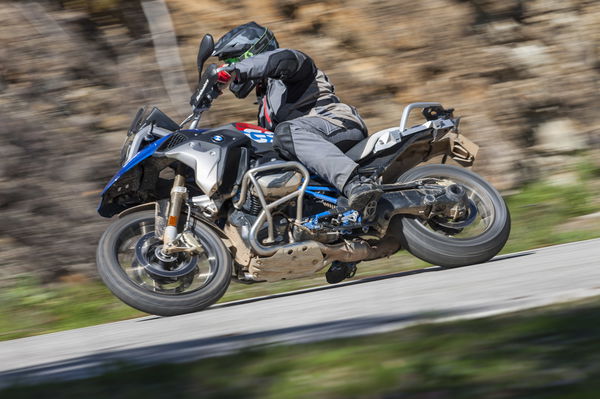
It’s a bike that never seems to punish you either. You can brake mid-corner, run terrible lines or ride like a moron and the GS regularly makes up for your mistakes. The engine drags you from corner to corner to corner with the boxer punch that lets you pull any gear you want any time. The brakes stop you as quickly as you’ll ever need them to and the linked brakes give precision feel. The whole combination adds up to a bike that is hard not to like from the moment you ride it.
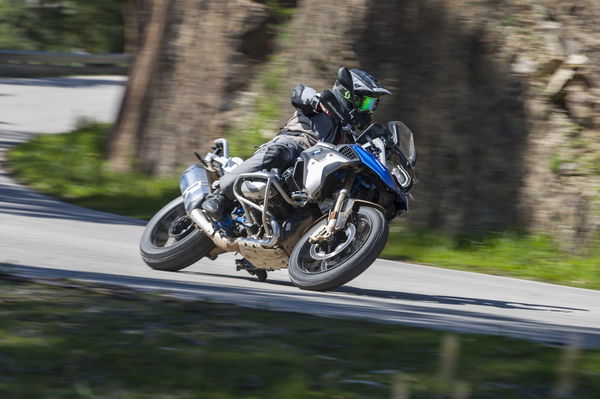
That’s on the road. It’s when the tarmac gives way to the dirt that the GS really surprises. It seems like it shouldn’t work. It lacks a conventional fork and on the scales it’s heavy. But it does work.
Its biggest strengths are its balance, torque, exceptionally good brakes and deceptively light feel. The whole package works together and everything that makes it a good street bike also make it a great dirt machine. That may sound odd but it’s true.
The engine is effortless, pulling tall gears with ease and letting you glide along like a magic carpet. It’ll pull you up hills and out of holes if you let it. Even better is the balance left to right. Those sticky out cylinders keep the centre of gravity low and controllable. It makes technical riding, slow speed turns and difficult trails easier than should be possible on a 200kg+ machine.
It somehow feels light and effortless to steer despite its size and weight. I’m not sure any other bike in the category manages this trick to the same extent.
Don’t get me wrong; when you push the envelope you need skill to make the GS work off-road, but its brilliance is its planted, docile and nursing nature. It helps you out, gets you through no matter what type of riding you do
The ability to teak riding modes sounds like a minor change but it’s a nice improvement, especially as the standard modes and the ‘Pro’ modes are very different.

To access the Pro modes you plug in a little module under the seat. That plug also lets the bike retain your settings. The downside until now has been that ‘Pro’ generally means the bike’s electronic systems interfere less.
In ‘Enduro Pro’, for example, the traction limit is much closer to the edge of the grip than the standard Enduro mode, while ABS is deactivated at the rear wheel. That’s great if you’re a confident off-roader but not necessarily so great if you’re not.
Now you can have the Pro Plug in, so the bike retains your ABS/Traction and mode settings, and tweak the settings to suit your skill level. On twisty Portuguese tarmac I settled on using Dynamic Pro mode but with the throttle response from the Road mode. I did this because the Dynamic throttle response is abrupt. The freedom to mix and match settings like that is one advantage of the updates.
Perhaps more important is the lean-angle-sensitive ABS. It’s effectively the same BOSCH system that has cornered the electronic aids market and it’s very good. This is most noticeable when braking deep into a corner. The telelever is already very good at this as it doesn’t squat like a conventional fork and therefore doesn’t try and sit up as you brake deep. The updated ABS now lets you do even more stupid things like grab the lever when you know you normally shouldn’t, or change line to get around that manhole you just spotted on the apex, with a much lower chance of becoming intimate with a hedge.
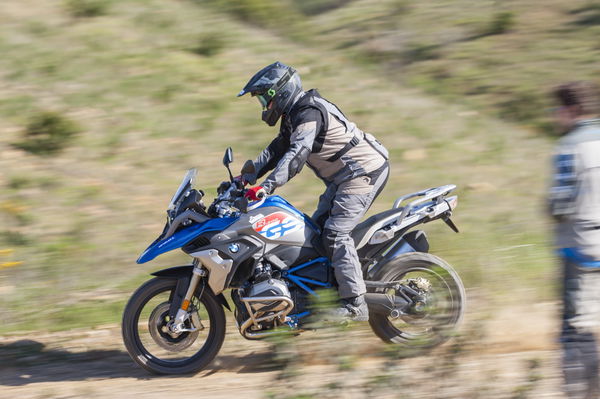
The new ABS system has also been tweaked so that the wheels will never lock. Until now, the GS has on occasions let the wheel cross the line momentarily.
Most GSs are sold with the optional ESA electronic suspension, which alters damping at the push of a button. The difference between modes is dramatic and the performance, comfort and flexibility of it is fantastic.
For 2017 BMW have added an optional auto pre-load adjust feature. Previously you could adjust it to suit rider, rider and luggage or rider and pillion. Now the idea is that the bike auto adjusts when you sit on it. Now all that is very clever, very luxurious and very effective but do you need it?
I found the standard, non-ESA suspension pretty good. It’s not as flexible but also not a disappointment. Around town it’s a little sharp and harsh but as soon as you put some speed under the wheels it’s perfectly happy and settled and doesn’t over wallow. If the ESA version didn’t exist there would still be little grounds for complaint.
On the Rallye version, the special features are specifically aimed at the off-road-focused GS rider (while they may be in the minority, they do exist).
The seat is a better shape for off-roading. It’s 10mm taller but narrower where your legs typically connect when standing up. That narrowness makes the bike feel less tall at a stop despite the height increase, but the foot-peg-to-seat ratio is a little nicer for the taller among us. The slimmer design pushes your knees out less when standing up.
The addition of big foot-pegs is also a total gem for dirt riding. The stock Adventure model’s foot-pegs are simple but effective and putting them on a GS is something that should have happened an age ago. They’re grippy, wide and infinitely more comfortable to stand on over the course of a day. The only downside is the lack of rubber inserts means more vibration.
The little screen is still fully adjustable on the fly and for riding around town or in the hills it’s much better that the taller variant. It makes the bike feel smaller. Plus, the chances of smashing your face into it when pretending to be Charley Boorman are far reduced.
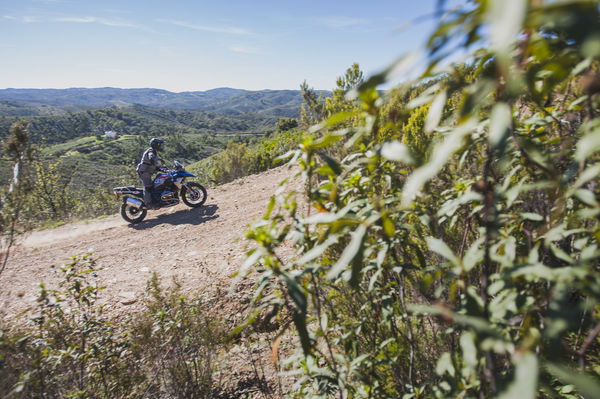
If you’re 5”10 or under, the chances are you’ll still be in a nice clean pocket of buffer- and noise-free air. If you’re taller you may have to do a little hunching over but the screen is surprisingly effective.
A centre-stand has typically been a bothersome thing for off-road riding. It regularly catches the heel of your boot and the ground, so the absence of it on the Rallye is an advantage. If you want one you can always purchase it as an optional extra, as all the mounting points remain on the frame.
The only thing really missing from the package is the addition of the height-adjustable Adventure model’s rear brake pedal. The stock rear brake pedal sits too low to be good on dirt.
The Rallye tested in Portugal was without the new, shiny, KTM R-rivalling Pro suspension, which isn’t available to buy until May this year.
Essentially, it’s the new dynamic, self-levelling electronic suspension from the GS Adventure. That means you get 25mm more travel front and rear, with a stiffer spring rate than the standard GS. The Pro suspension is purely designed to go faster and work better. We’ll be able to tell you in a few months how well that works, but if you’re not too fussed on going faster then we wouldn’t worry too much.
We learned a lot on the R1200GS Rallye Launch. We learned that southern Portugal is a motorcycling paradise, with dreamy, empty roads and endless trails carving across the tops of the hills. More importantly, the big lesson of the day was that the R1200GS remains a phenomenal big adventure bike in the face of new competition.
For all it’s quirks and weirdness it rides fantastically well on and off-road: comfortable, enjoyable and well-polished.
The controls are sublime to use, the switch-gear is simple and well designed and the problems of the early models seem to be solved.
It’s a bike that can literally do everything. It’ll never win in any discipline but at the same time you’ll never stop enjoying it either. Be it on the road or mountain trails, the GS is boss.
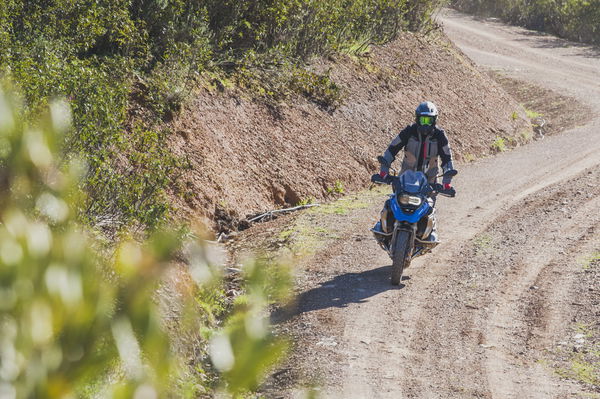
Read our Honda Africa Twin review.
Read our KTM 1290 Super Adventure S review.
Model tested: BMW R1200GS Rallye
Price: from £12,730 (from £12,250 for base-model GS)
Engine: 1170cc liquid-cooled boxer-twin Engine type
Power: 125hp @ 7,750rpm
Torque: 92lbft @ 6,500rpm
Wet weight: 244kg
Brakes: four-piston radial front calipers on 305mm twin discs, twin-piston rear caliper on 276mm disc
Tyres: 120/70-19 front, 170/60-17 rear
Seat height: 850-870mm
Fuel capacity: 20 litres
